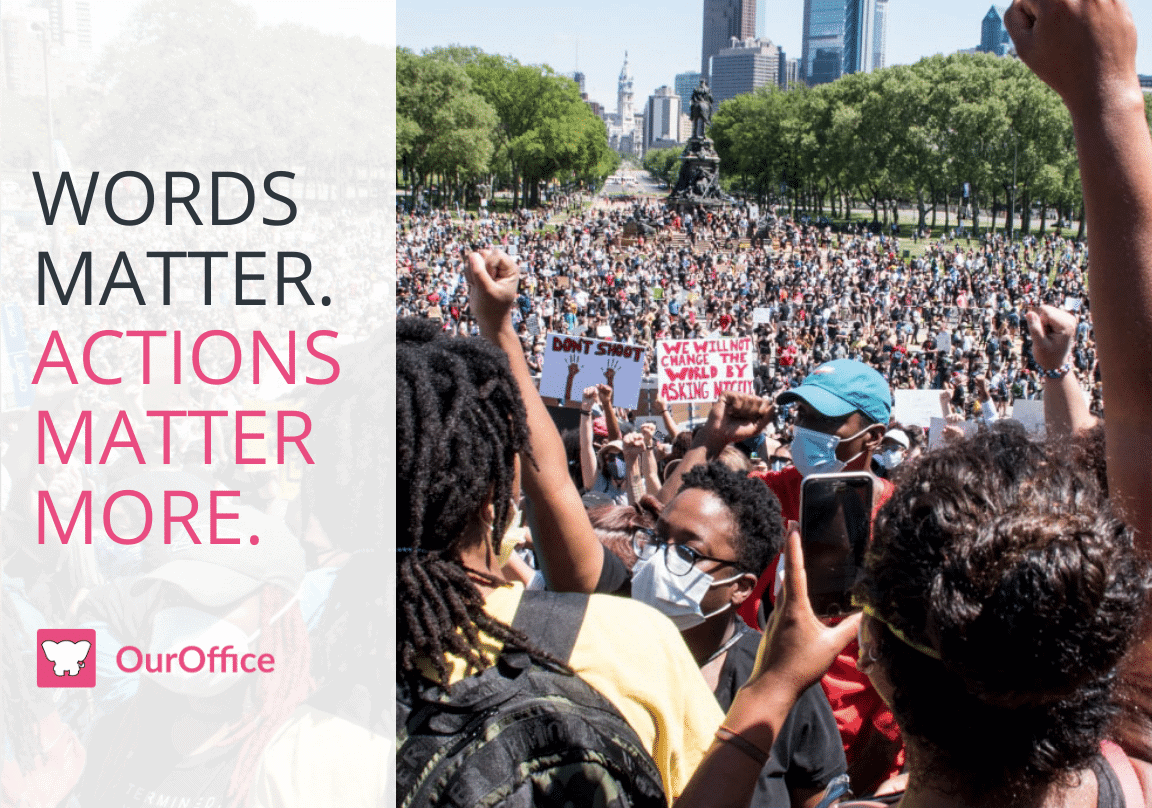24 Jun What’s wrong with the definition of “belonging” and why it matters

At a recent Diversity and Inclusion (D&I) Roundtable hosted by a major university in Michigan, we learned something very important. This has led us to change our definition of “belonging” and we think that the Cambridge dictionary should do the same!
When you search for “belonging,” the Cambridge dictionary offers “fit in” as one of the synonyms for the verb “belong.” Therefore, we expected our own definition of “belonging” for the Roundtable to be uncontroversial: “Bringing one’s whole self to the workplace, fitting in, and being able to contribute fully.” It was meant to start the Roundtable discussion by clearly defining the terms, and drawing the distinction between “belonging” and “inclusion.”
Free Download: The Ultimate Guide to Building an Inclusive Workplace Culture
The immediate feedback we got from the D&I experts at the roundtable caused us to rethink our definition. Further research and discussion with the experts led us to remove “fitting in” from our definition of “belonging.” Why does this matter? Because belonging is the key to employee engagement, which despite surveys and best efforts, has remained quite low (more on this later).
In our work we have found that too often our common beliefs and perceptions can be wrong, and even dangerous, when it comes to D&I — which makes our work all the more interesting and critical. Brené Brown, a research professor at the University of Houston, has written extensively, given Ted Talks, and even has a new Netflix Special about vulnerability, courage and belonging. Brené’s work is focused on “being who you are” in order to belong, vs “changing who you are” to fit in. We think there is a crucial lesson in this for organizations who want to create an inclusive workplace culture where employees can belong, engage, and thrive.
Turns out belonging is a basic human need that comes right after the need for physiological and safety needs on Maslow’s Hierarchy. Before an employee can build strong connections with their organization’s mission, and their leaders and coworkers, they need to feel comfortable with who they are at work. If an employee is preoccupied with figuring out and conforming to the unwritten rules of their workplace in order to fit in, there is not much energy left to relate to the mission, to establish relationships, and to fully engage.
This is really important because the links between engagement and key performance measures have been established by many studies. For example, Gallup has reported significantly better performance between companies in the top quartile vs the bottom quartile of employee engagement: 21% in profitability, 40% in quality, and 70% in safety incidents. Yet despite a recent rise in employee engagement, it’s disappointing that with all the surveys and various efforts, only 34% of US employees are “engaged.” Could it be that we have been missing a key ingredient in employee engagement?
As the saying goes, it’s more than just a numbers game. In our conversations with best-in-class companies who have taken Diversity Pledges, achieved Diversity Certifications, or won Diversity Awards, the leaders share their frustration with the inevitable plateau, where they can see great improvement in the numbers, but they can’t feel the same level of progress in the culture. I have personally felt this as a leader of a large global organization, and I can attest to the disillusionment and frustration felt by leadership when this happens, despite all their efforts.
Achieving the numbers is really only the beginning of the D&I journey. So how do you know if employees feel they belong in your organization, and what can you do about it? The collective experiences and on-going research by our team point to a few factors that you can watch for:
“WE” vs “YOU” or “THEY” — Watch for the use of these words by your employees, and also by the applicants. Higher use of “WE” vs “YOU” and “THEY” usually correlates with a higher sense of belonging in the organization.
We are fortunate to get regular inquiries from awesome people who want to join our company (often on a volunteer basis) to help with the mission of transforming the workplace with a culture of inclusion. We have noticed the applicants who use “WE” at some point during the interview process, often turn into amazing team members who share our mission and are invaluable contributors.
Beyond Surveys — We applaud organizations who have adopted the practice of regular surveys and more frequent pulse polls, and who follow up and act on the outcomes. But this is simply not enough, as evidenced by the lack of significant progress over decades. Why?
By definition, a survey or a pulse poll, at best informs you of how your employees feel at the specific time when they responded to the specific question(s) that they were asked. It says little about how they feel most of the time about a number of topics that ultimately impact their overall sense of belonging. This at times leads to employees taking drastic actions like the 2018 global walk-out by 20,000 employees at Google offices across 50 cities.
Consider going beyond surveys, and adding a safe and focused environment for on-going employee communications across the organization. The more transparency you provide in a safe environment, the closer you will get to really understanding your employees. You will also increase empathy as employees share their unique experiences and ideas. We initially added the Stories module to the OurOffice platform at the request of our users, and have since continued to see strong demand for additional capabilities for various use cases, most recently for communications among Employee Resource Group (ERG) members and their allies.
Who’s talking? — For the next week or so, take note of who’s talking in your meetings. Is 80% of the conversation dominated by a few people, or do you get a sense of a real dialogue by most of the people at the meeting? Do you ever hear someone being asked about their opinion, if they are generally quiet, or are they simply ignored most of the time? These are simple clues about your workplace culture and the degree to which people feel they belong. Watching for who’s talking in meetings is one of our recommended micro-actions, that anyone in the organization can take to contribute to an inclusive culture. You don’t have to be the boss or leading the meeting. Any colleague can ask someone’s opinion if they have been quiet, or point out that all the inputs have not been shared yet. Try it and you’ll see how far this simple act can take your organization.
Gratitude and Celebration — When is the last time you remember an office get together, heard someone, or seen an email, to simply thank or recognize a colleague or a team for something they did? If all you can remember are retirement parties, when people say nice things about a colleague, then your organization may have an opportunity to significantly improve the sense of belonging by taking the time to express gratitude and celebrate more often.
If measuring and improving “belonging” sounds too soft, or too hard to do, please consider the following:
1. The switch from a mindset of “fitting in” to “belonging” takes your employees from being in a survival mode to actively engaging, thriving and succeeding
2. Focusing on belonging is a differentiator with proven benefits that is not yet broadly leveraged, so it can be a competitive advantage for your branding, hiring, retention, engagement, and performance
3. It’s really not as hard as you may imagine with the skilled professionals, helpful resources and innovative solutions that are emerging, as long as you have the necessary leadership focus
Thank you for being part of the solution. If you found this piece helpful, please feel free to share it with other professionals in your network, so they can benefit as well. For questions and more information, please go to OurOffice website, or contact us at team@ouroffice.io.
Image by John Hain from Pixabay



